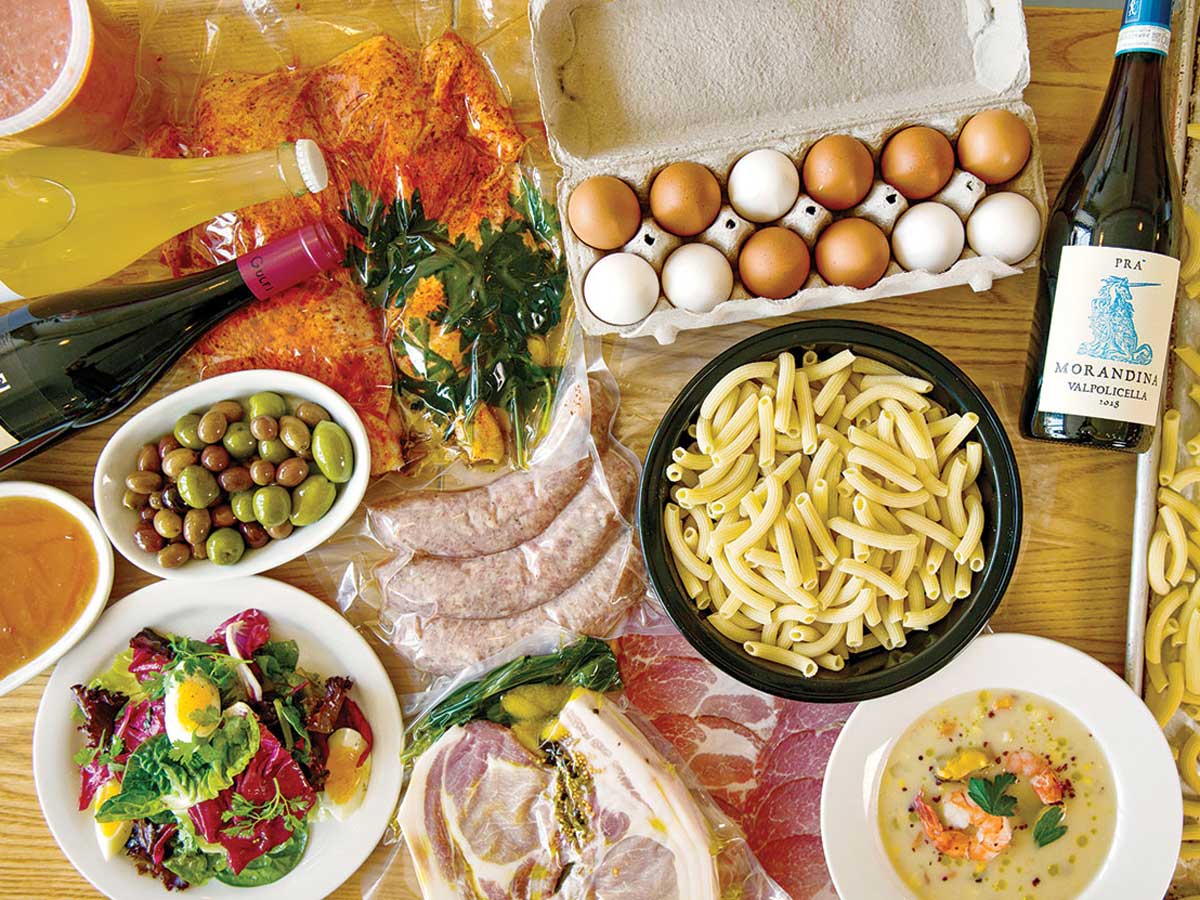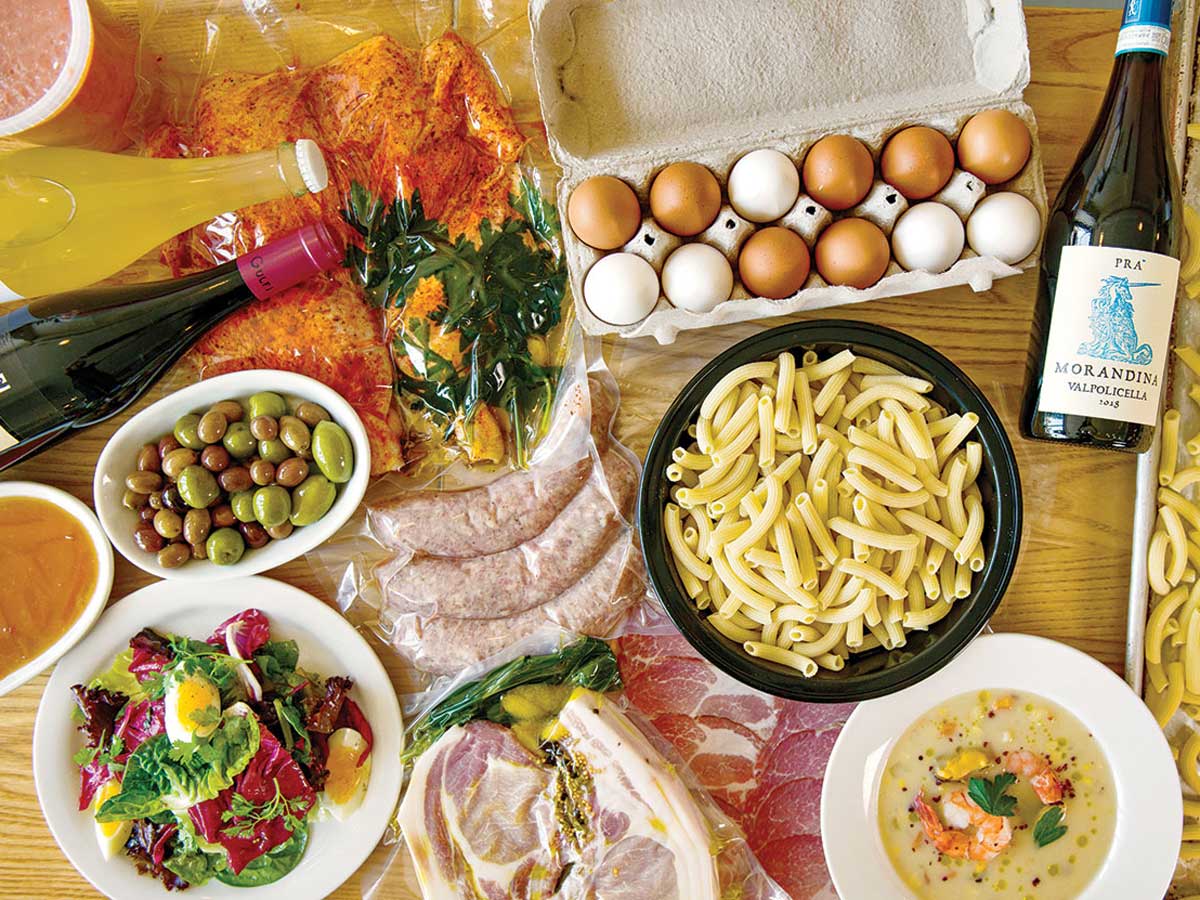
Here’s how restaurants are coping with the pandemic
 An online meal kit from Toronto Italian restaurant Wynona (Photography by Daniel Neuhaus)
An online meal kit from Toronto Italian restaurant Wynona (Photography by Daniel Neuhaus)
“It’s as if aliens came from outer space and decided to totally destroy restaurants.” This is how David Chang, the celebrated chef behind 16 Momofuku restaurants—two of which have already shuttered—recently described the utter shock of COVID-19’s impact on his industry.
By the end of March, the outlook was dire: According to a national survey conducted by the hospitality advocacy group Restaurants Canada, 800,000 employees had been laid off and nearly 10 per cent of restaurants had already closed permanently; by early May, seven out of 10 respondents worried they would not make it through the next three months. Those numbers represent a serious hit to the Canadian economy: Food service generates $90 billion a year and employs seven per cent of the total workforce. And the loss of revenue reverberates well beyond dining rooms, through the intricate matrix of farmers, producers, suppliers and distributors that lie behind every plate. Consider, for example, the fact that Canadian potato farmers are sitting on a glut because 75 per cent of their spuds are served in restaurants, and you glimpse the seismic ripple effect of the industry’s collapse.
To survive, many restaurants retooled at breakneck speed. Takeout and delivery are deemed essential services, so several spots have simplified their menus and signed up with delivery services. In some cases, owners are driving deliveries themselves, not only to save the fee they’d have to pay an app like Uber Eats, which typically charges 30 per cent commission on every order, but to stay connected to their customers, who they hope will come back after physical-distancing rules are lifted.
Others are preparing meal kits: vacuum-packed, marinated meats; handmade pastas and sauces; charcuterie and cheese baskets—some accompanied by Instagram cooking demos from chefs. Still others are transforming their dining rooms into bodegas, where patrons can pick up salads and burgers alongside flour, eggs and toilet paper. And in several provinces where officials okayed the sale of alcohol to go as long as it’s accompanied by food, restaurateurs are selling off their cellars. (To meet the “with food” requirement, Zach Slootsky, the owner of The Federal, a popular comfort-food spot in Toronto’s west end, offers rare bottles with a bag of Doritos.)
For business owners who didn’t have strong delivery games previously, these makeshift measures are largely unsustainable: A months-long shutdown still requires keeping some staff employed and paying suppliers, bank loans and, most urgently, rent, which can easily run upwards of $30,000 a month in cities like Vancouver, Victoria and Toronto. “Restaurants operate on notoriously thin margins, just five per cent,” says John Sinopoli, partner and executive chef of Ascari Hospitality Group and the co-founder of Savehospitality.ca, a cross-country coalition of over 1,500 hospitality owners—representing over 78,000 workers—lobbying federal, provincial and territorial governments for help during COVID-19. “We’re a high-rent, high-labour, low-profit business that requires, on average, 15 workers to generate $1 million in sales. If you reduce those sales by 50 per cent, we’re dead in the water.”
Seventy-five per cent of potatoes gown in Canada are served in restaurants
That’s why his group, along with Restaurants Canada and chefs all over social media, are calling for more than loans and rent and tax deferrals, which would only leave them in deeper holes to dig out of later on. As of late April, the federal government had offered a handful of interventions, including a 75 per cent wage subsidy for 12 weeks, loans of up to $40,000, interest-free for the first year, and a program called the Canada Emergency Commercial Rent Assistance (CECRA), which made it possible for some small-business owners to pay just 25 per cent of their rents for the months of April, May and June—if their landlords were willing to participate.
If the closures clocked by Restaurants Canada continue apace, nearly 30 per cent of establishments will have papered over their windows by summertime. And it’s not just indie spots that are likely to shutter. Adam Brown, partner for value creation services and national restaurant sector leader for Deloitte Canada, notes that COVID-19 has created financial stress across fast food, casual and fine-dining sectors. “Those that are going to emerge the strongest,” he says, “be they independents or part of a larger chain, are those that quickly made operational and cost-structure changes: They innovated their menus through meal kits and delivery, offering online ordering, no-contact payment and menu simplification. And they engaged with their loyal customers about the fact that they’re open and they’re safe.”
Even with lockdown orders lifted, reopenings may be more incremental than grand, with limited menus and hours as owners hire back staff in stages and adjust to physical-distancing reconfigurations, including fewer cooks crammed around stoves, fewer guests rubbing shoulders in dining rooms, and possibly even a fade-out of the communal tables, sharing plates and no-reservations policies that have been so popular for the last decade. “Marketing and brand promise will pivot toward safety to make customers feel secure,” says Brown, who lists no-contact transactions and single-use menus among the ways restaurants can put diners’ minds at ease.
To make up for lockdown losses, dishes are likely to go up in price. “Prices have gone up maybe five per cent since the 1990s,” estimates Sinopoli. “Meanwhile, costs have gone up 100 per cent, and that’s going to change.” Slootsky of The Federal hopes for a broader attitudinal shift when it comes to prices: “If restaurants became more expensive and that was culturally acceptable, it would allow owners to care for our workers.” Part of caring for workers in the post-pandemic world means simply keeping them on payroll, so servers and cooks may find themselves multitasking more feverishly than ever before as services that are often outsourced, like window washing, linen laundering, grease trap cleaning and dishwashing, move in-house—a shift that also cuts operational costs.
None of this can replace the intangible fizz you feel when you go out for a great meal—the precise cocktail of playlist and lighting, a room decorated just so, bathrooms with fresh flowers. For that, there may be a renewed appreciation as Canadians emerge from months of their own cooking. “Restaurants have survived big crises,” says J-C Poirier of St. Lawrence, a vaunted French-Canadian restaurant in Vancouver. “It’s a slower time for business, but the ones that have adjusted to the change will survive and continue on with a stronger sense of community and more gratitude for what we have.”
BUSINESS SURVIVAL DURING COVID-19
Read about innovative ways businesses are staying afloat, and tips to keep your business alive. Meanwhile, here are the best ways to utilize government support for your business, and how to better service clients during a pandemic.